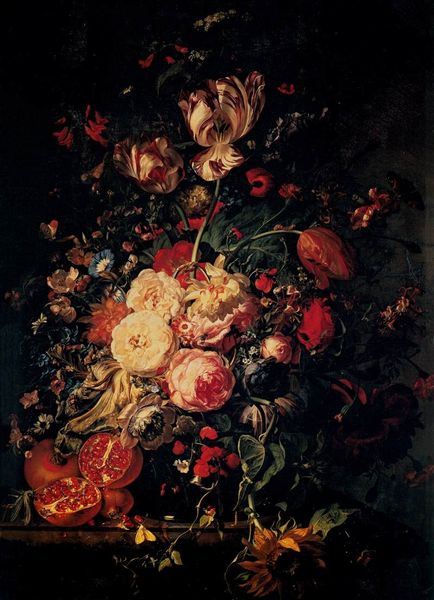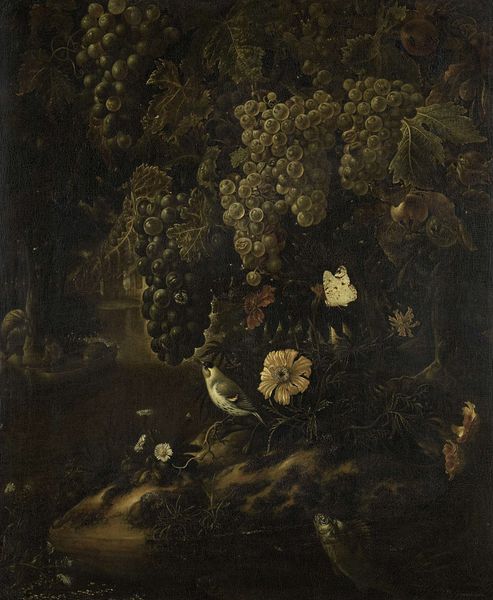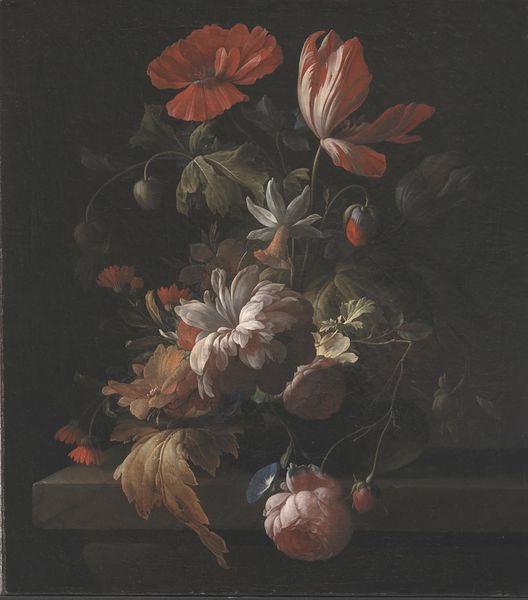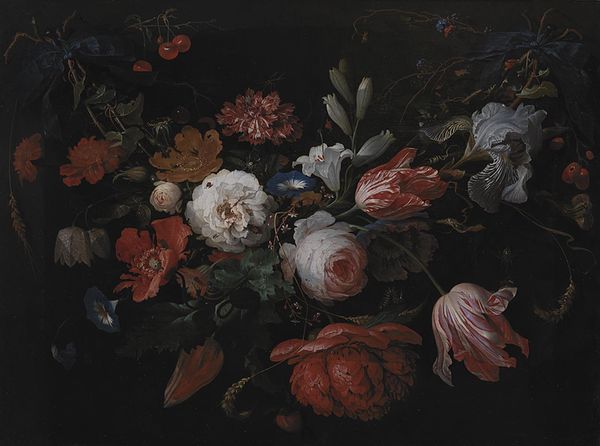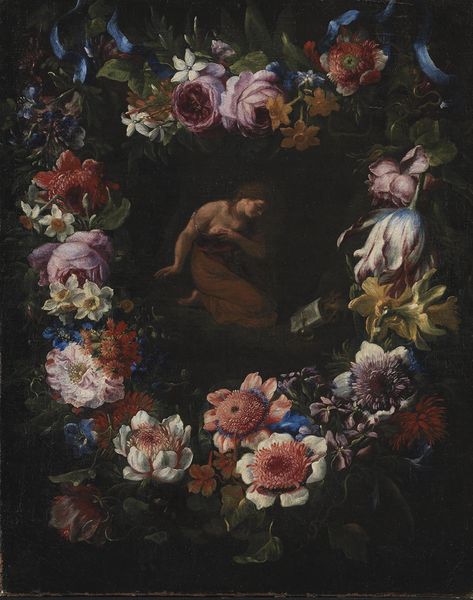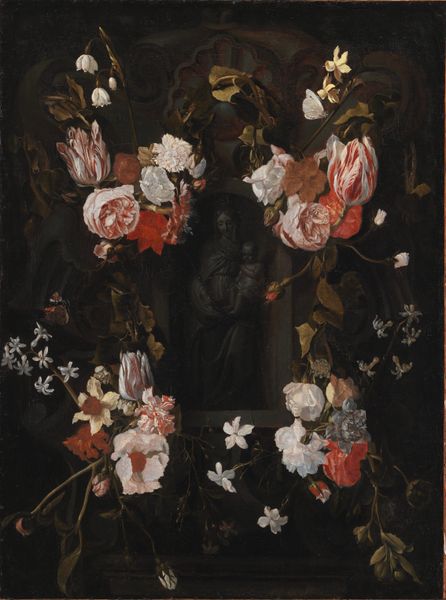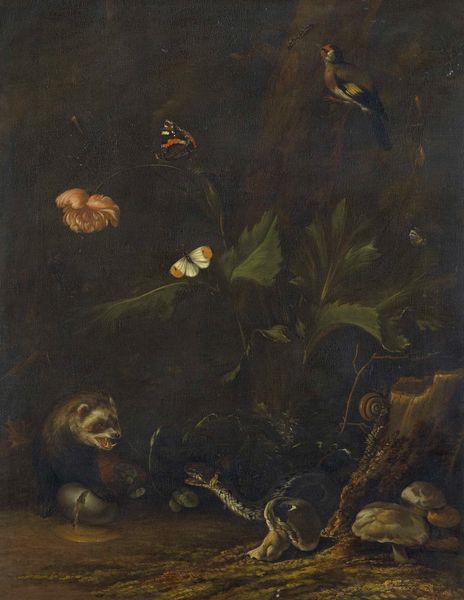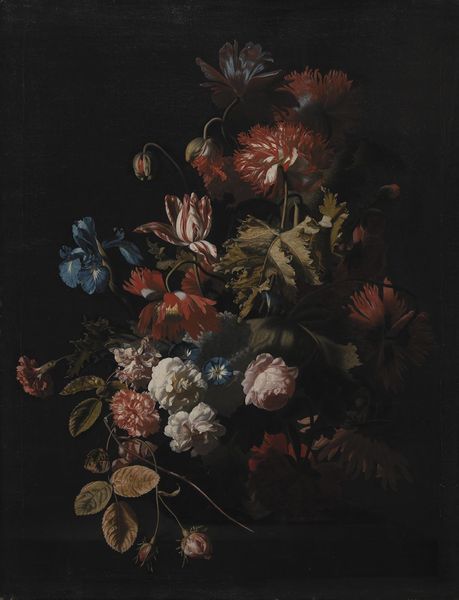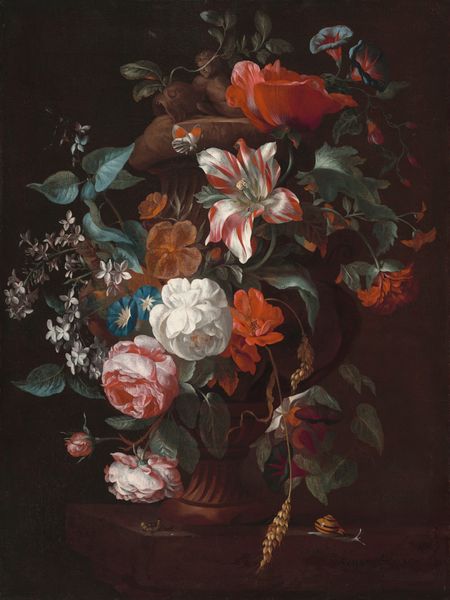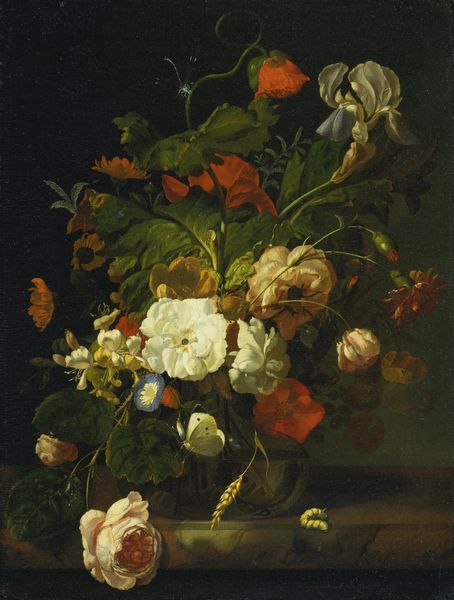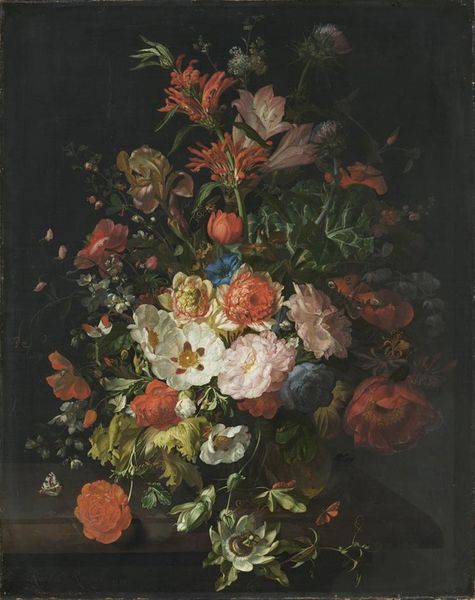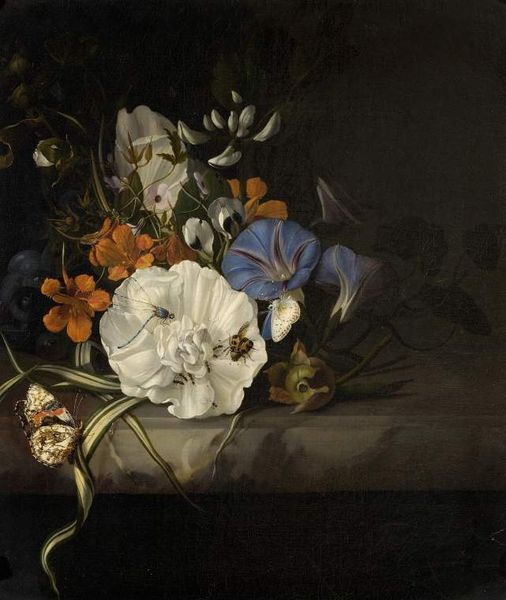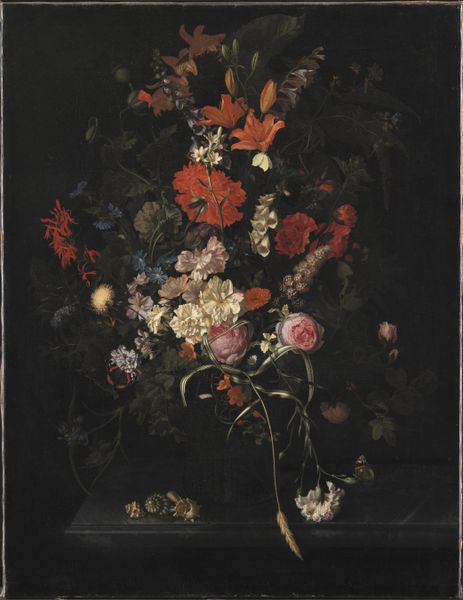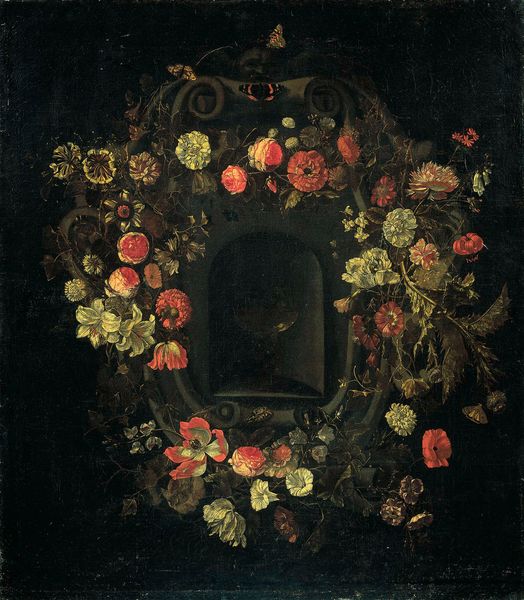
Flowers Around a Tree Trunk, with Insects and Other Animals near a Pond 1686
0:00
0:00
rachelruysch
Schloss Wilhelmshöhe, Kassel, Germany
painting, oil-paint
#
organic
#
baroque
#
dutch-golden-age
#
painting
#
oil-paint
#
landscape
#
flower
#
oil painting
#
plant
#
realism
Copyright: Public domain
Curator: This is “Flowers Around a Tree Trunk, with Insects and Other Animals near a Pond,” painted in 1686 by Rachel Ruysch, a prominent Dutch Golden Age artist. Editor: My initial reaction is one of entering a vibrant yet mysterious world. There’s a sense of both abundant life and encroaching darkness. Curator: The image is abundant in symbology, even down to each insect included in the composition. Butterflies are particularly powerful signifiers—in many traditions they represent the soul, or transformation and resurrection. Ruysch includes at least five here. Editor: Yes, and placed among decaying wood and shadowed corners, their presence challenges us to consider themes of transience and beauty coexisting, especially for women who were denied equal status in many contemporary professional institutions, even in art academies. Curator: Precisely. Consider also how a lily symbolizes purity and innocence in a religious context. Peonies stand for wealth and honor. Dutch Golden Age paintings like this were visual testaments to a society grappling with prosperity, mortality, and moral responsibility. Editor: The inclusion of “lowly” creatures like frogs and snails complicates that reading of simple moralizing, though, doesn't it? The way Ruysch paints those details—a snail’s spiral, the moist skin of the frog—almost elevates them. Could these be subtle gestures toward social inclusiveness or feminist politics, suggesting that the ignored or the “lowly” have intrinsic worth? Curator: Possibly, it could also signify a deeper interest in scientific discovery which was starting to become increasingly prevalent in Europe at the time. These were newly "discoverable" microcosms within the natural world. These were motifs repeated from the Middle Ages too, with "creeping things" used as allegories for the temptation of earthly pleasures. Editor: Fascinating to consider the different interpretations! The tension between symbolism and emerging naturalism speaks to a world in transition. Curator: Agreed. And Ruysch’s skillful brushwork adds to that dynamic tension. The realism is striking. It creates a compelling tableau for us to explore. Editor: It reminds us of the complexities woven into seemingly simple depictions of nature. Ruysch certainly rewards closer examination.
Comments
No comments
Be the first to comment and join the conversation on the ultimate creative platform.
